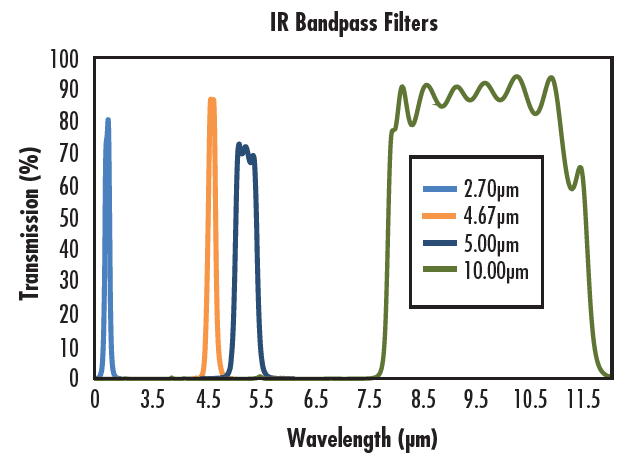
Infrared (IR) Bandpass Filters, developed with durability in mind, provide the high transmission and deep rejection needed to isolate narrow spectral regions. The single substrate dielectric construction ensures easy maintenance, allowing for use in harsh environments. The filters are ideal for environmental monitoring, security and FLIR applications. Infrared (IR) Bandpass Filters have center wavelengths of 2.7-12.4μm. These filters are available in a 12.5, 25, or 50mm diameters, in a variety of center wavelengths.
Bandpass interference filters are used extensively in a variety of biotech, biomedical, and quantitative chemical applications to selectively transmit a narrow range of wavelengths while blocking all others. Interference filters are widely used in instrumentation for applications including clinical chemistry, environmental testing, colorimetry, elemental and laser line separation, flame photometry, fluorescence, and immunoassays. In addition, interference filters are used to select discrete spectral lines from arc or gas discharge lamps, including Hg, Xe, and Cd, and to isolate a particular line from Ar, Kr, Nd:YAG, and other lasers. Bandpass interference filters are often used in conjunction with laser diode modules and LEDs.

or view regional numbers
QUOTE TOOL
enter stock numbers to begin
Copyright 2023 | Edmund Optics, Ltd Unit 1, Opus Avenue, Nether Poppleton, York, YO26 6BL, UK
California Consumer Privacy Acts (CCPA): Do Not Sell or Share My Personal Information
California Transparency in Supply Chains Act